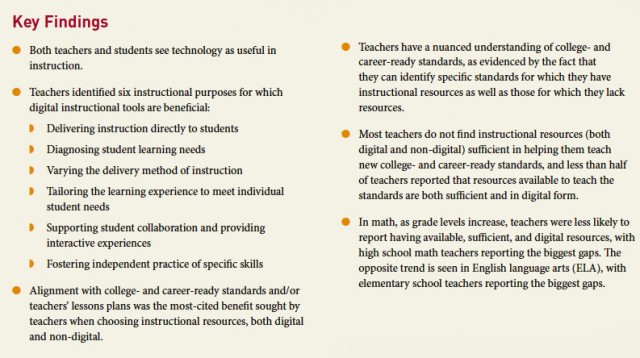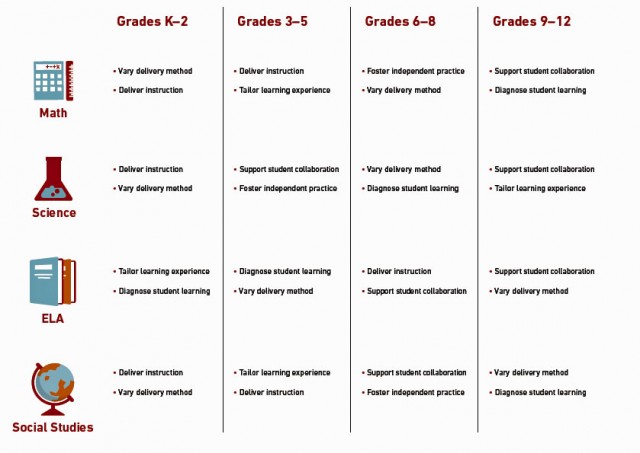The Bill and Melinda Gates Foundation just released a report detailing the results of 3,100 teacher surveys and 1,250 student surveys on the kinds of digital instruction tools that are useful and effective. The foundation has asked teachers and students what they need when it comes to digital instruction, aiming to close the communication gap between commercial developers and schools.
One of the biggest takeaways is that most teachers -- 54 percent -- don't find many of the digital tools they use effective. That's partly because teachers often aren't making purchasing decisions. When they do have a say in tool selection they often report on its effectiveness more favorably. When asked about free products, teachers reported that free products are just as likely to be effective as the products the district purchased for them.
[Click on images below for higher resolution.]

In terms of content, teachers are looking for digital tools that support their efforts to help students become college and career ready, including tools that are aligned to Common Core State Standards and the Next Generation Science Standards. Although there are many math-only and English Language Arts-only digital tools for the high school level, both teachers and students report low expectations of effectiveness when using those tools. There is a large gap of both perceived effectiveness and availability of science content at every grade level, and while few products are aimed at social studies-only, teachers often find those tools to be effective.
The report paints a picture of a fragmented system where teachers are constantly searching for tools to help them meet new standards and requirements, but are distanced from decision making about the tools they use in the classroom. Product developers are focusing on math and ELA tools, but teachers and students don't always find them to work well, with particularly large standard gaps when it comes to high school math.


